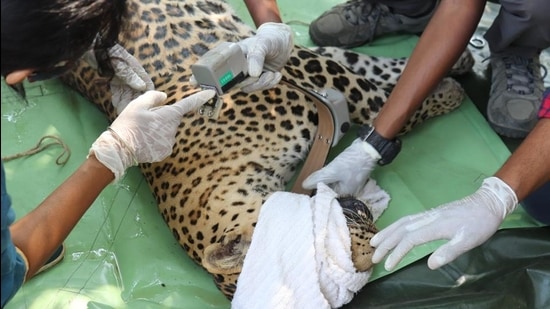Second leopard at Mumbai’s SGNP gets a radio collar
A six-year-old male leopard at the Sanjay Gandhi National Park (SGNP) was radio-collared and released into the wild on Monday
A six-year-old male leopard at the Sanjay Gandhi National Park (SGNP) was radio-collared and released into the wild on Monday. Earlier on Saturday, Savitri became the first leopard in Mumbai to be radio-collared, named after the social reformer and educationist Savitribai Phule.

This is a part of the first phase of leopard radio-collaring work being carried out at SGNP, which is aimed at tracking and understanding the animal’s movement, said park director, G Mallikarjuna. A total of five leopards will be radio-collared in the first phase.
The leopard, radio-collared on Monday, has been named Maharaj after Chhatrapati Shivaji.
The two-year-long project to radio-collar leopards was initiated in 2018 when the park authorities signed a memorandum of understanding (MoU) with Wildlife Conservation Society – India (WCS).
“We are hoping that this activity will help us understand leopards better,” said Mallikarjuna.
The collars work by sending signals via satellite, which researchers can then use to investigate where the animal is and what it is doing.
The key goals of this project are to obtain knowledge on how humans and leopards interact with each other, and how each adapts to the presence of the other. The collars will help gather information on how leopards move across major roads such as Ghodbandar Road and understand their use of space and time in the SGNP landscape. This data will then help provide management recommendations concerning the way these big cats move in the landscape and conflict mitigation based on the results of the study.
Dr Vidya Athreya, from WCS, said, “This project at SGNP will give us more insights as in Mumbai, a high density of people lives in such close proximity to big cats. It will also help us track their pathway and understand how they cross busy roads such as the Ghodbunder Road. This will then help us manage them better to bring down mortality.”



